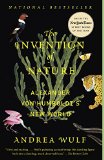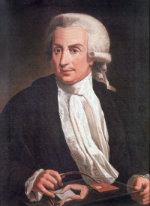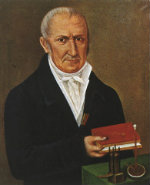Summary | Excerpt | Reviews | Beyond the Book | Read-Alikes | Genres & Themes | Author Bio

Alexander von Humboldt's New World
by Andrea WulfThis article relates to The Invention of Nature
Who would have thought that one frog could have such a huge impact on science?
As bizarre as it sounds, that was exactly the case. In the late eighteenth century, a scientist named Luigi Galvani performed an experiment on a frog, making a slight cut just beneath the frog's skin to expose nerve cells. When the scalpel came into contact with a metal hook holding down the body, sparks flew, and the legs of the frog twitched. His conclusion? Animal tissue is endowed with electricity. The scientific conclusion Galvani reached — and the remarkable widespread interest it engendered – led to a surge of interest, especially in the medical community, but also in the popular imagination.
 The idea that animal's bodies were vessels of electric current – and that dead animal tissue might be brought back to life if the electrical charge could be restored (think of it like jump-starting a car battery) – caught the imagination of the scientific community, as well as the public. Among the many scientists enthralled with this discovery was Alexander Von Humboldt, the subject of Andrea Wulf's The Invention of Nature.
The idea that animal's bodies were vessels of electric current – and that dead animal tissue might be brought back to life if the electrical charge could be restored (think of it like jump-starting a car battery) – caught the imagination of the scientific community, as well as the public. Among the many scientists enthralled with this discovery was Alexander Von Humboldt, the subject of Andrea Wulf's The Invention of Nature.
Humboldt became obsessed with so-called 'animal electricity' or Galvanism and began a long series of 4,000 experiments in which he cut, prodded, poked and electrocuted frogs, lizards, and mice. Not content with experimenting on animals alone, he began to use his own body making incisions in his own flesh, and adding chemical compounds or electric current to gauge the response of his muscles.
Throughout Europe, in the early nineteenth century, "Galvanism" inspired scientists, naturalists, and artists. The most famous application of galvanism in art is probably Mary Shelley's use of the idea in her masterpiece Frankenstein. "Perhaps a corpse would be re-animated; galvanism had given token of such things: perhaps the component parts of a creature might be manufactured, brought together, and endued with vital warmth," she wrote in the preface to the 1831 edition of Frankenstein. In the novel, after years of study, Victor Frankenstein prepares to jolt his creature into life: "I collected the instruments of life around me, that I might infuse a spark of being into the lifeless thing that lay at my feet."
 Galvani's work has had a more lasting impact on society: his experiment inspired a physicist named Alessandro Volta, whose own experiments in electricity led to the development of the electric battery. Volta also gave his name to that most common measure of electricity, the volt.
Galvani's work has had a more lasting impact on society: his experiment inspired a physicist named Alessandro Volta, whose own experiments in electricity led to the development of the electric battery. Volta also gave his name to that most common measure of electricity, the volt.
Interestingly, Volta disagreed with Galvani's theories about regeneration by restoration of electrical impulse. His own experiments showed that the sparks in Galvani's experiment resulted from two different metals coming into contact, not from the frog's body itself.
In a way they were both right. The presence of electromagnetic impulses in nerve cells, as posited by Galvani, would be verified by scientists many years later. His work did lead to the discovery of electrical impulses in nerve tissue – all living things generate a kind of electricity throughout the body – especially the brain.
However, the electrical charge Galvani observed was due to the combination of the two metals in contact with the nerve cells, as Volta suggested. Galvani overstated his conclusions, scientists now say. But just like Volta, Galvani's legacy is also enshrined in the language, with the word "galvanize" deriving from his name.
Picture of Luigi Galvani from Museo di Palazzo Poggi
Picture of Alessandro Volta from Anthroposophie
Filed under Medicine, Science and Tech
![]() This "beyond the book article" relates to The Invention of Nature. It originally ran in October 2015 and has been updated for the
October 2016 paperback edition.
Go to magazine.
This "beyond the book article" relates to The Invention of Nature. It originally ran in October 2015 and has been updated for the
October 2016 paperback edition.
Go to magazine.




It is a fact of life that any discourse...will always please if it is five minutes shorter than people expect
Click Here to find out who said this, as well as discovering other famous literary quotes!
Your guide toexceptional books
BookBrowse seeks out and recommends the best in contemporary fiction and nonfiction—books that not only engage and entertain but also deepen our understanding of ourselves and the world around us.